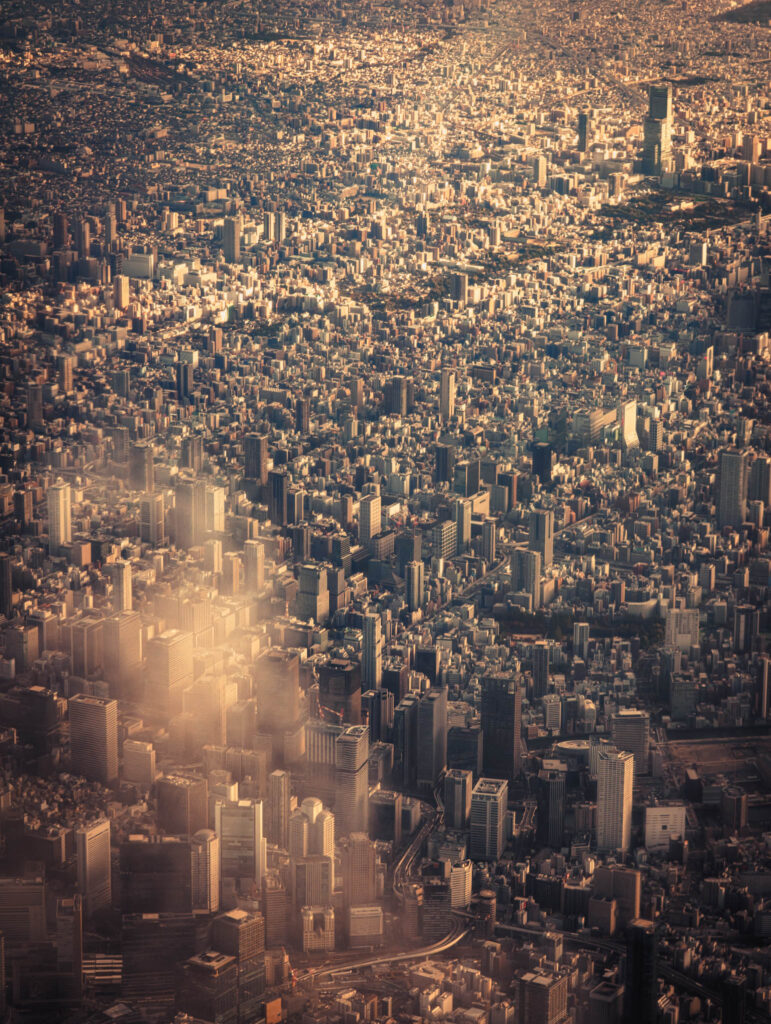
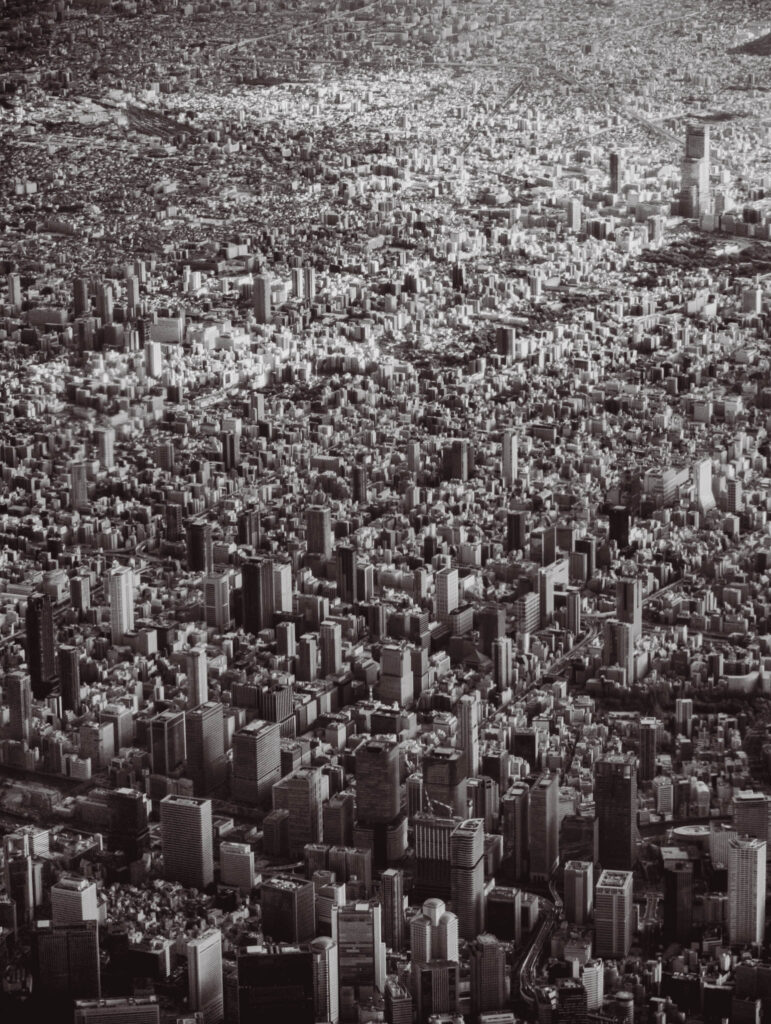




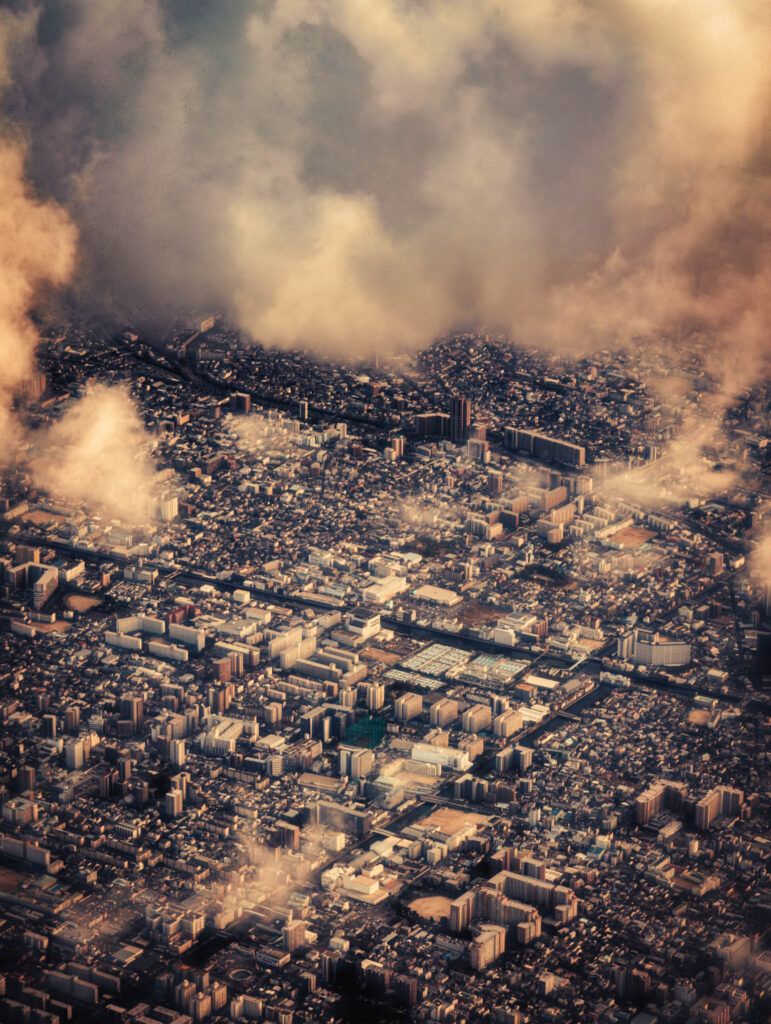
Behold a sea of ills so vast, I thought.
And then immediately I began to question why I thought this and where I had encountered the phrase before.
With regard to the latter question, I felt this exhortation might have originated in Christian theology or eschatology, perhaps as a paraphrase on Erasmus. But that’s not really a field of my expertise. And in fact a web search exposed the words as simply the unique title of a piece from the obscure 2007 album Black Triage by a mysterious and apparently defunct ambient electronic music outfit that called itself “Teargas & Plateglass”. Black Triage seems to have been a musical meditation on the universal human tendency towards genocide as well as the equally inevitable attempt to conceal that crime once it has been committed. It’s the sort of difficult music to which I would have been listening during that decade.
The phrase was seemingly conjured from my memories by the urban expanse of Osaka and its surrounds, photographically captured from the window seat of a JAL airliner enroute from Itami to Narita. I don’t have much experience of Osaka from the ground, other than a quick stop at a Japanese version of a Korean barbecue restaurant, as I was on my way to somewhere else. I have been led to understand that the city’s mercantile inhabitants are regarded with a certain circumspection by Japanese from other regions, but it’s not clear to me why. Neither am I fluent enough in the Japanese language to judge whether the typical choice of phrasing there is more vulgar or aggressive than elsewhere, as I have also occasionally heard from Japanese acquaintances.


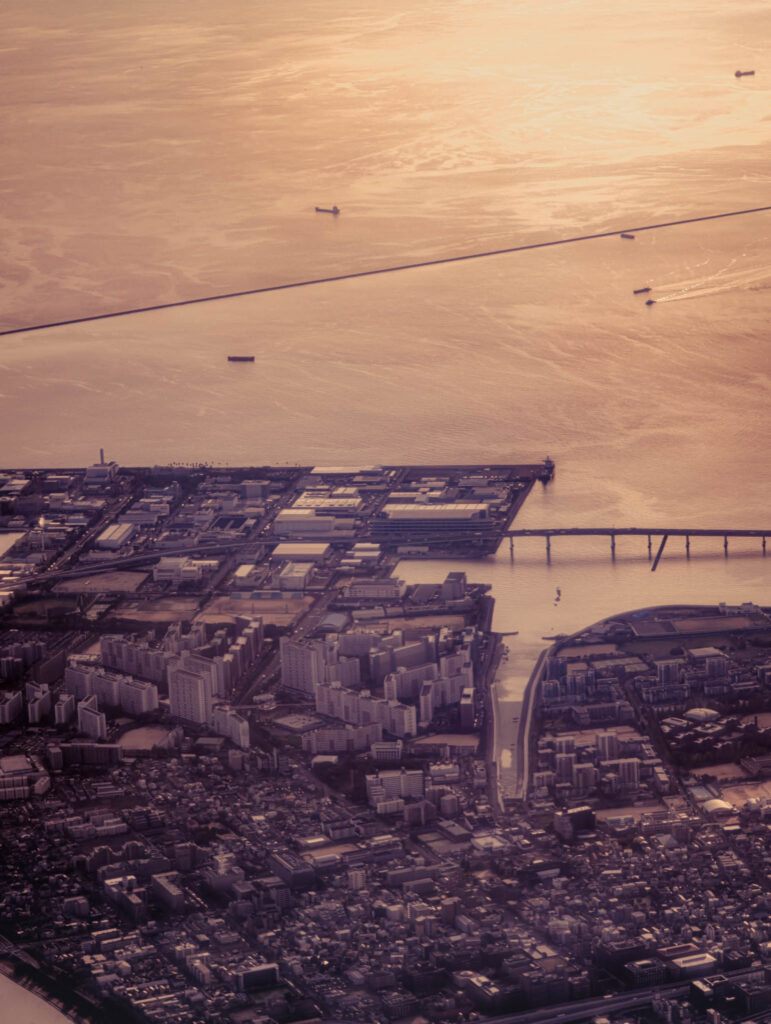
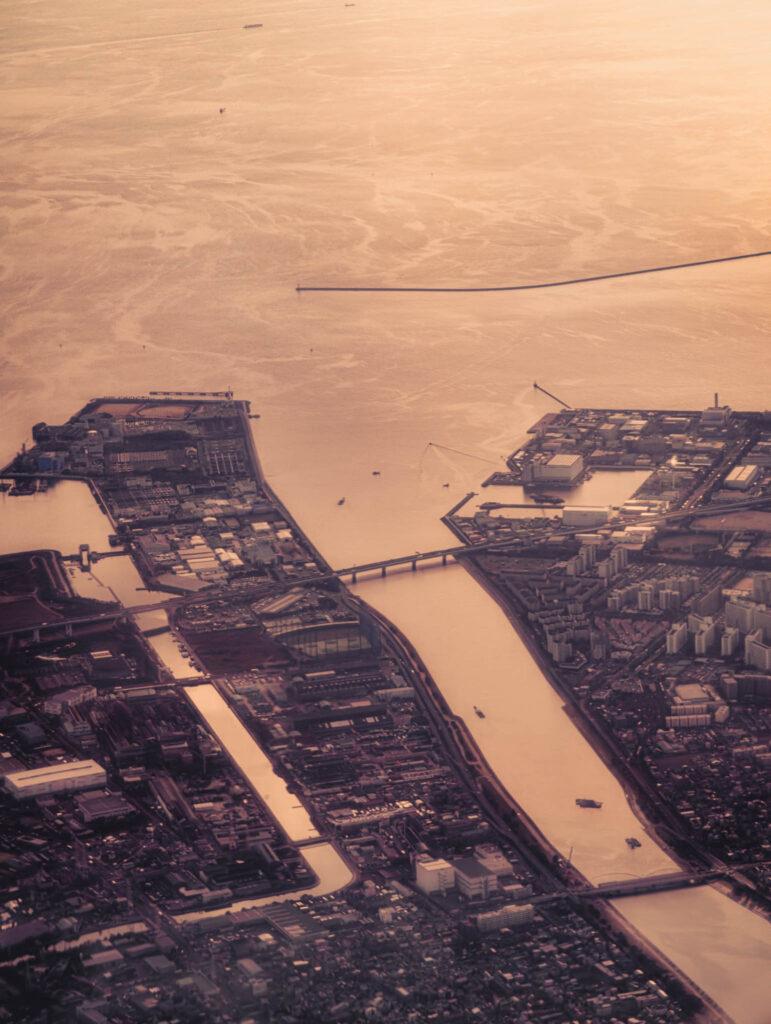


Of course, I am familiar with the historical role the castle of Osaka played in the epic final battles for reunification of Japan in the early seventeenth century, when the Tokugawa brutally eliminated the resurgent Toyotomi threat to the new shogunate.
But that was a long time ago. I don’t see why I would associate the third-largest city in the country — the habitation of approximately thirteen million people in the third decade of the twenty-first century — with “a sea of ills” or worse, more than I would with any other city anywhere. I am only confronted here by the span of Osaka. In many of the photos, it’s oddly centerless and uniform, as if generated by a procedural algorithm as opposed to economics, history, or geography: a borderless sweep of high-and-low-rise buildings and highways, extending changelessly for the most part to the edges of the frame except where interrupted by the true sea or the steep forested mountains.
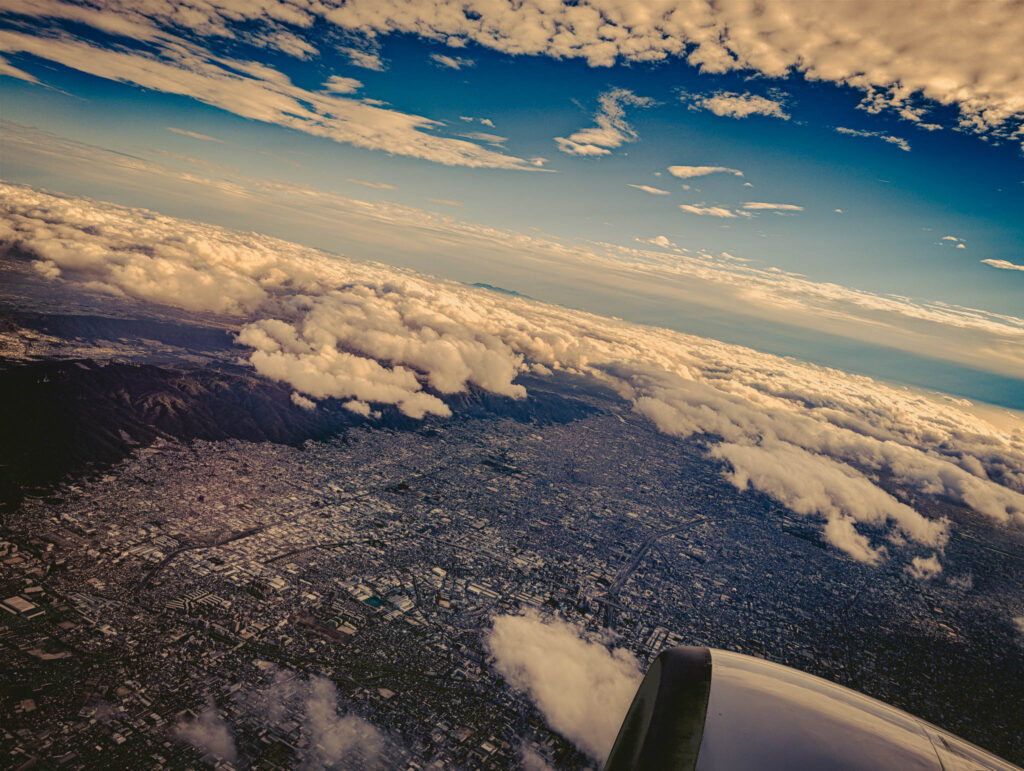

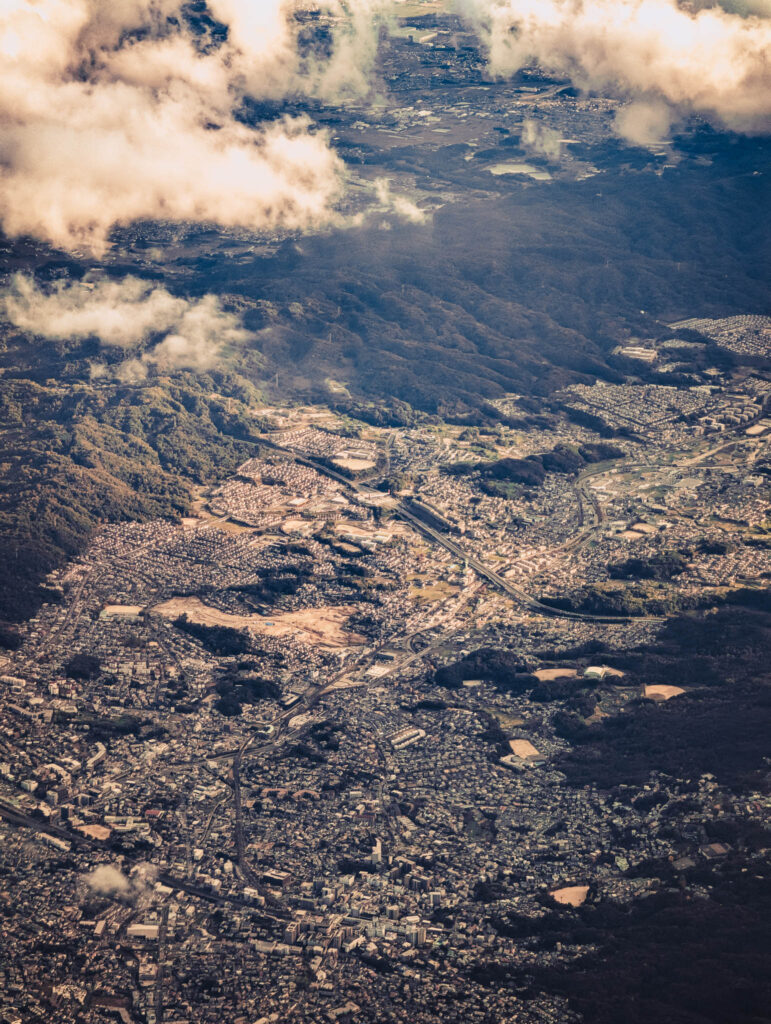

Unless, of course, it is that sheer uniformity, implying relentless and universal human tendencies, that invokes that dark “vast sea of ills’. The ills are there — and elsewhere, in all inhabited spaces in the world to some degree — because human beings are there, and human beings bear and concentrate those ills wherever they may congregate.
Leave a Reply